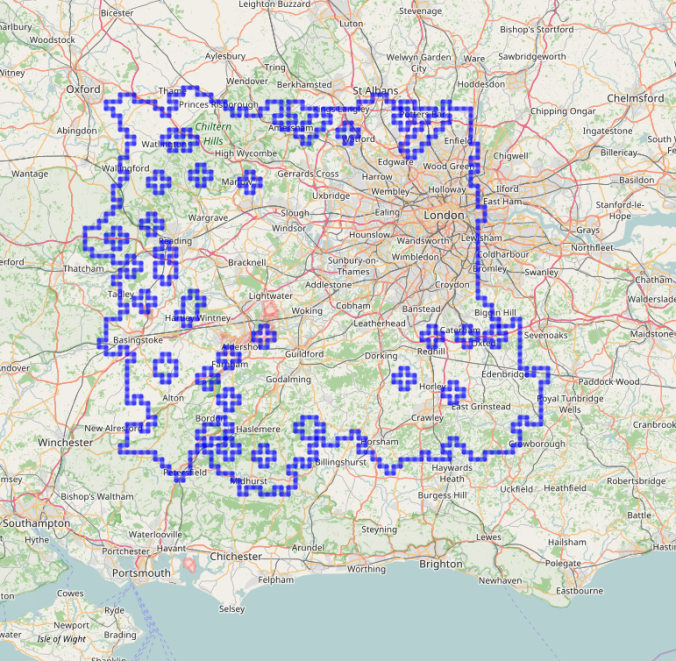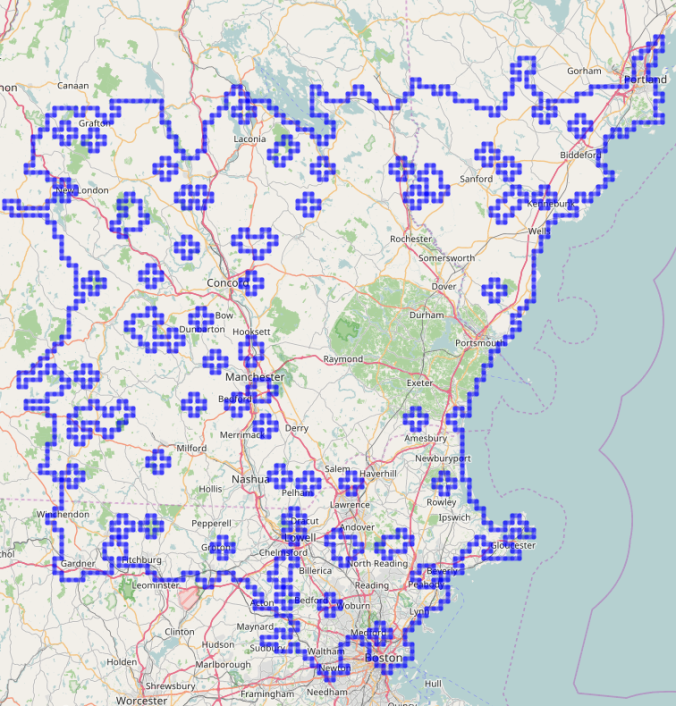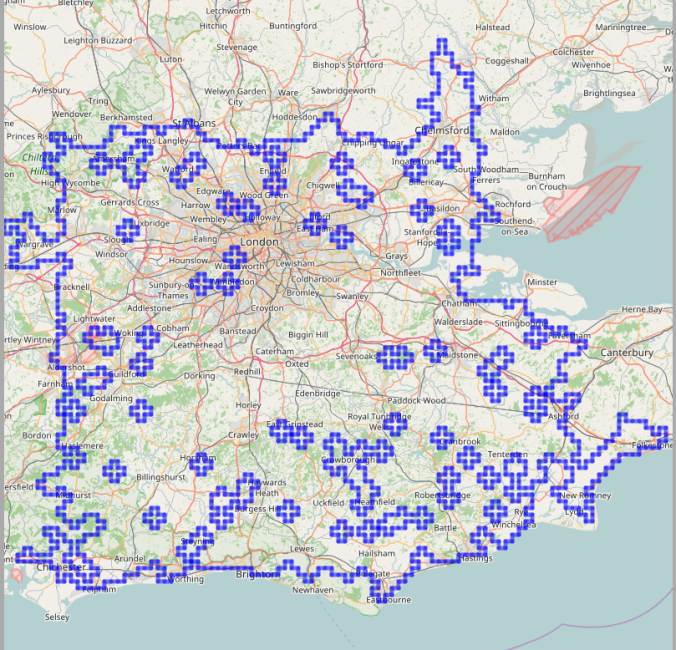[19th June 2017: Updated to add: Ben VeloViewer has now done a better proof-of-concept – check out your own VeloViewer map for an example! Also see Ben’s Facebook post for more details and for your chance to vote on the name for this new thing. At the moment it looks like “cluster” will win out over “clump”.]
The pictures below show some example “max clumps” for real data. The “max clumps” shown here are calculated using the following rules:
- A square is in a clump if
- You have visited it
- You have visited all four squares that are adjacent to that square.
- If two adjacent squares are both in a clump they are in the “same clump”
- Divide up all your visited squares into clumps. The clump with the most squares in it is called the max clump.
These rules are not set in stone or sent by God or anything else that. They are just some choices that seem to create some nice patterns.
(more commentary follows below the pictures)

My max clump

The max clump of the rider who was North American leader before “Squarepocalypse”

The max clump of the rider who was UK leader before “Squarepocalypse”
I quite like the middle map – it clearly shows that the cyclist in question has really been up and down everywhere on the New England coast.
All three maps feature lots of cross shapes. These are due to me generating the data in the days immediately after the squarepocalypse. If there is a missing square then not only is that square missing from your clump, but also the four squares adjacent to it aren’t included either This has the effect that a missing square has slightly multiplied effect on your “clump score” – meaning that you should still try hard to visit every square. But if there are truly unreachable squares, then you aren’t crippled from playing the squares game – you just get a 5 point penalty effectively.
Feedback welcome at the Ride Every Tile Strava club .
Thank you Pete!
— the rider who was North American leader before “Squarepocalypse”
LikeLike
Pingback: Clumps are now clusters – ExplorerSquare